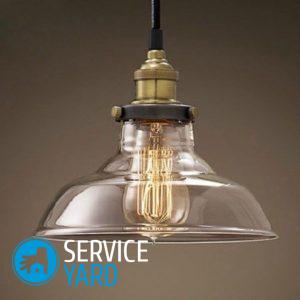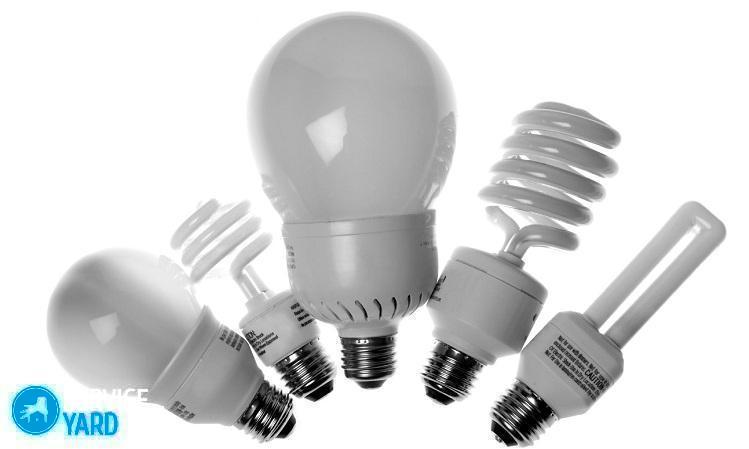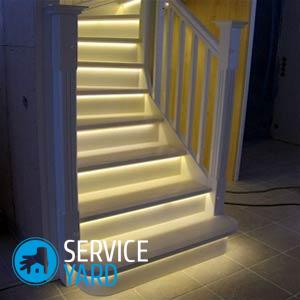DIY LED lamp repair

Any lamp has a working life, which is determined by the conditions of maintenance and operation. Any kind of light source is best used following general rules and recommendations. Such measures will help increase the lamp life. But what if the diode light source fails due to a voltage drop? In this case, only DIY repair of LED lamps will help us. How it is performed - we will describe in this article.
to contents ↑General principles
If you are familiar with general physics, then you should be aware that the design features of diode sources are very different from analogs of lighting. Such equipment has key components in the form of a base, a stabilizer, a diffuser and the diodes themselves in the right amount.
Important! The main function of such a light source is the conversion of electric current into light radiation.
Alternating voltage provides power to the diode bridge. The signal passes according to the scheme and the rectified voltage gets to the input of the LED. For this reason, the connection can only be made through a network with a voltage of 220 V. The stabilizer independently sets the necessary voltage level for the device to work.
How to repair a LED lamp with your own hands? To answer this question, the degree of damage should be established.
to contents ↑Is the component repairable?
Before attempting to disassemble the device, you should make sure that the problem lies in it. It happens that at the moment of switching on a voltage surge occurs. In this case, it can be argued that the cause of the failure lies in the wiring. But according to statistics, a lamp loses its performance much more often than its wiring. Such a case requires disassembly by hand, carefully separating the parts of the body.
Important! Many models of such components are not intended for dismantling, but some jack of all trades have long found a way out of the situation: you just need to use an ordinary hairdryer in order to heat up the case and remove the dried out glue.
Now the consumer has the opportunity to assess the extent of the tragedy visually. Inspect the printed circuit board, the quality of the wiring and the soldering of the LEDs, it is also necessary to make sure that there is no burning and molten areas.
to contents ↑Important! If no deformations were found, you will have to use special equipment - an electronic tester or a multimeter.
Where to look for damage?
It is impossible to repair the LED bulb with your own hands if you do not establish the cause of the breakdown:
- The root of the problem can lie in the idle capacitor, which is engaged in limiting the current. To check this component, you will need to unsolder it.
Important! The multimeter may give an error during the current measurement, so check the capacitor on a working analog. Also, do not forget that the voltage of this Conder should be strictly above 400 V.
- If the problem is not at all in this place, then you can try to examine the diode for a breakdown, using the same multimeter. Just set the desired mode and check all the components.
- If the problem has not been identified even after these actions, then it is best to re-pay attention to each component - very often the problem lies in the resistors.
- There is also the possibility that a break in the conductive path has occurred.
How to deal with blinking?
Repair of LED lamps may also be required in cases where the diode “flashes” all the time. Let's look into this situation.
Why does this occur? The bottom line is that the current-limiting capacitor does not receive enough voltage. To repair the diode, you will have to unsolder the broken element from the printed circuit board and install a new element with the same parameters as the old one.
Important! There is another way out of this situation. You can simply solder another capacitor with a small operating voltage in parallel. In total, two containers will ensure uniform operation without any flicker.
Checking device operation
For understanding, it is worth disassembling another cause of failure - a burned-out emitter. Identify this reason will help the characteristic black soot. But not every element will show you similar symptoms of a malfunction, and this means only one thing - there is a need to check each of the elements. Light sources of this type can vary markedly: in some, the minimum number of diodes is used, in others, a lot of these components are installed.
In order to determine the malfunction, you should use a multimeter. The purpose of this test is to compare the resistance levels of transitions of elements in the case of direct connection. The optimum value should be approximately 30 kΩ.
But there is another method, which is also worth considering. You will need to use the means at hand:
- Resistor with resistance from 150 to 1000 Ohms. This value should determine the key parameters of the power source.
- 1.5-9V rechargeable battery.
To check, take a soldering iron and dismantle the emitters. You can simply zoom the output with the minimum voltage in a direct connection to each of the emitters. If there is a malfunction, the component will not emit light.
to contents ↑Important! In the case when only one diode burned out, you can simply close its output. If a certain number of components is faulty, you should resort to their replacement using tape emitters. The device tape allows you to easily get the necessary components without much effort.
Stock footage
Can I fix a LED bulb? The answer is yes, if you have basic knowledge of electrical engineering and some skills in working with electrical appliances. Even if this is your first time doing this, don’t be afraid to get to work, otherwise you won’t get any valuable experience, and you will not be able to break a broken diode anymore.







